- TOP
- Search Criteria
- Driving Away Demons With Beans: The Fascinating Japanese Tradition of Setsubun
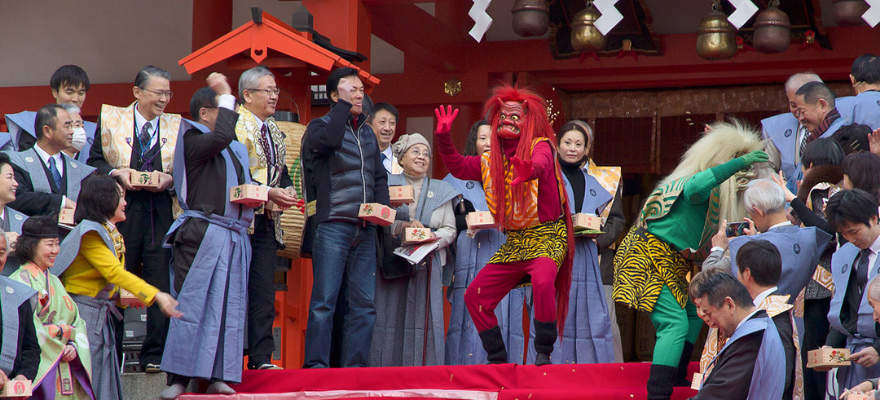
STORY
Driving Away Demons With Beans: The Fascinating Japanese Tradition of Setsubun
- JAPAN
- TOKYO
- KYOTO
- EXPERIENCE
- CULTURE
- EVENT
- SPECIAL
- TRADITIONAL_JAPAN
- FESTIVAL
- FOOD_CULTURE
- TEMPLES_AND_SHRINES
When February is around the corner, Japan knows it's time to brace for the real winter. Fortunately there are some interesting events to look forward to in the coldest month of the year. My favorite is the one that involves throwing beans and eating giant sushi rolls.
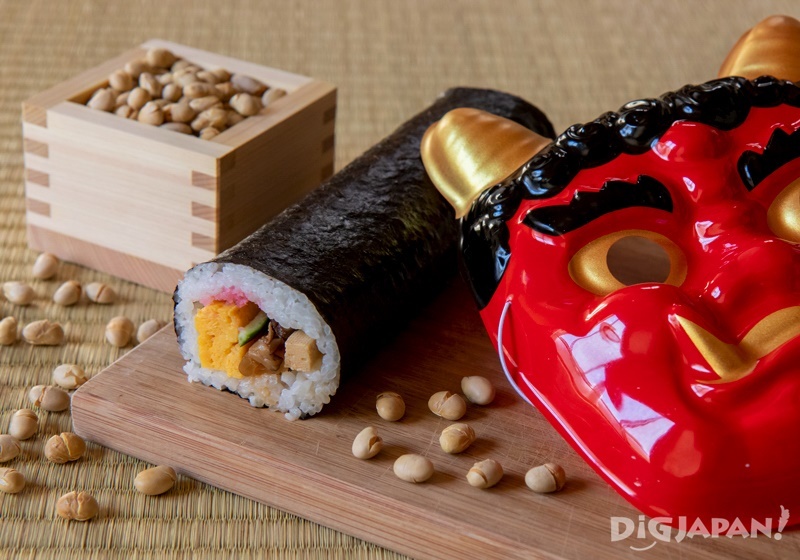
Setsubun (節分) is the day before the change of seasons in Japan. In particular it refers to the passage from winter to spring based on the Japanese lunar calendar. The celebrations have the feel of a New Year ceremony as they are centered around driving away the evil spirits and bringing in fortune and health for the year to come. The main ritual to bring in fortune is called mamemaki (bean scattering) and mostly it involves people throwing roasted soybeans at someone dressed up as an Oni (demon) screaming "Oni wa Soto! Fuku wa uchi!" (Demons out! Fortune in!)
Setsubun is usually celebrated on February 3rd, but depending on the year it might fall on the 2nd (like for the year 2021) or 4th.

This might be a lesser-known tradition compared to other holidays and festivals in Japan (Setsubun is not a national holiday), but it is one of my favorite and I find it really interesting. So what do you do on (and leading up to) Setsubun?

What people do on Setsubun may vary greatly depending on region and household. The mamemaki ceremony has a few different versions too. In some families, a family member (usually the father) dresses up as an Oni and the rest of the family throw roasted soybeans at him, yelling the aforementioned "Demons out, fortune in!".
In other households, people count the beans and eat a number equal to their age. Sometimes they'll eat one more to ensure fortune in the coming year. The remaining beans are scattered outside the front door to drive away the demons. Either way, the beans symbolize purifying the home and driving away the evil.
In some areas, shelled peanuts are symbolically used instead of the soybeans, since you can still eat them even after you've thrown them.

Mamemaki events are also held publicly, usually in temples and shrines. They often involve the appearance of fully dressed-up Oni characters, and people throwing beans at them to make them go away. Some places will perform the Onimondou (鬼問答), literally the "questions and answers with the Oni" where the priests talk to the demons and try to drive them away. There might also be performances from characters such as the Seven Lucky Gods.
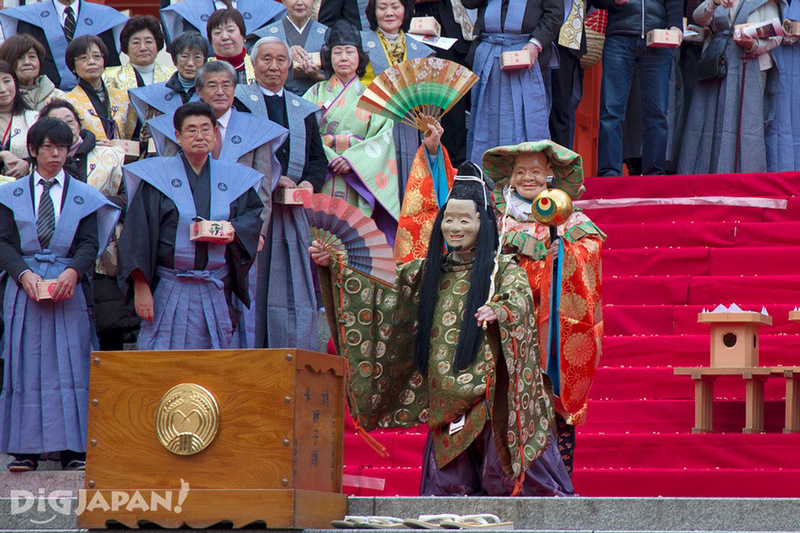
In addition, little envelopes containing beans, candy, or even money might also be thrown at the crowd, who puts up quite a battle to get them. Bigger events like the Setsubun at Sensoji Temple in Asakusa feature the appearance of celebrities, sumo wrestlers, politicians and mascot characters, usually to throw the beans to a very excited crowd. Some places also include the participation of local toshiotoko and toshionna (lit. man and women of the year), which are people that were born under the same Japanese zodiac sign as the current year. Traditional music and sometimes dances are also performed.
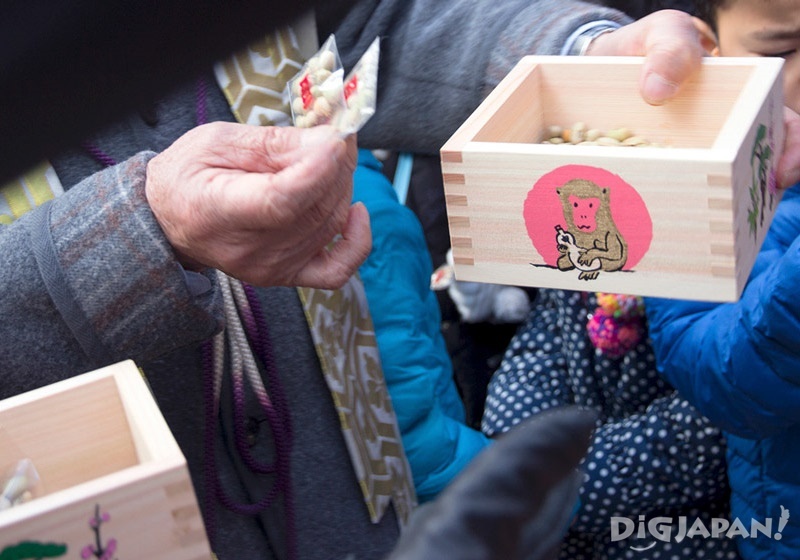
Some interesting variations: Kijin Shrine in Ranzan, Saitama worships Oni as gods, so instead of driving them out they chant: "fortune in, demons in, evil spirits out!". If you're in Kyoto, the Setsubun at Yasaka Jinja shrine lasts two days and features maiko and geiko dances in addition to the mamemaki.
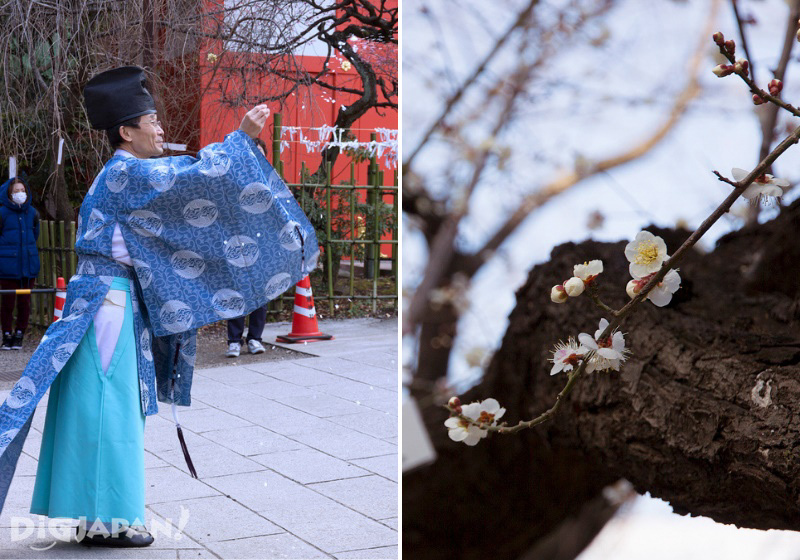
It's hard to convey the atmosphere of these spiritual events. The background of the traditional music, the graceful movements of the priests, the plum blossoms, first signs of spring. It's an amazing experience!
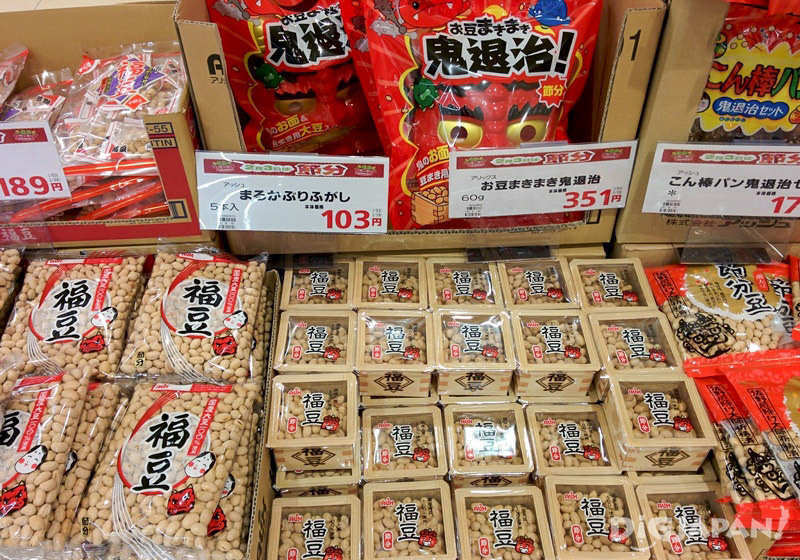
Your average Setsubun kit includes a bag of roasted soybeans (I love them as snacks!) and an Oni mask.
You can find them in a variety of styles, from a traditional design to the cartoony, kid-oriented packaging! If you look for them, you'll probably see other Setsubun and Oni-themed items as well. I always have fun scouting all of these out.
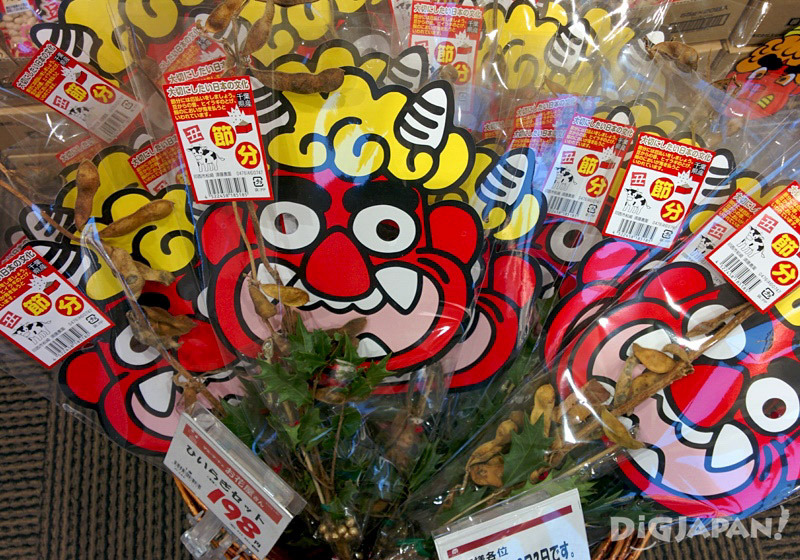
This is the Hiiragi Iwashi (holly and sardine head). Another (lesser-known) tradition of Setsubun is to place a holly branch with a sardine head on it outside your door. The sharp points of the holly and the smell of the sardine are said to drive the Oni away!

Another thing that people do on Setsubun day is eating ehomaki. Literally meaning "lucky direction roll", ehomaki is a makizushi (sushi roll) that is filled with seven ingredients, representing the Seven Lucky Gods. While regular maki-zushi usually comes in slices, ehomaki is left whole so as not to cut off the good connections and fortune. On the day of Setsubun you're supposed to eat ehomaki all in one go, in silence while making a wish. You should also face the year's "lucky direction". For example, the lucky direction of 2021 is south-southeast.
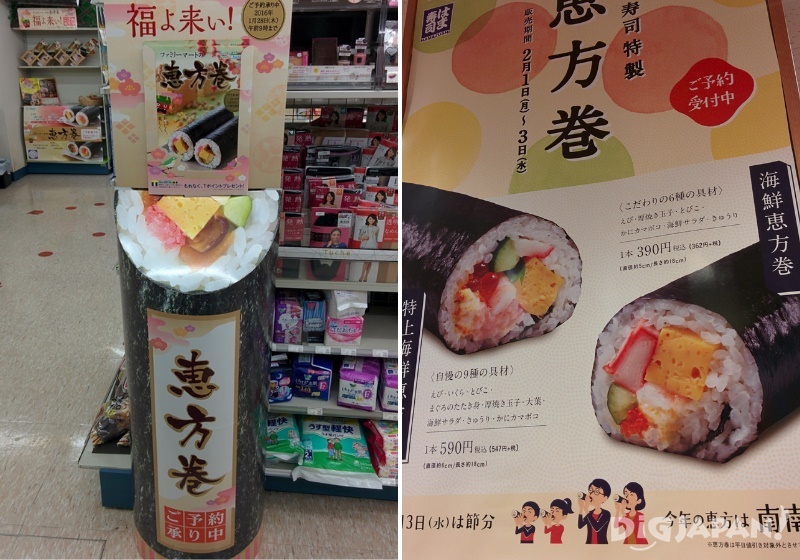
The tradition of eating ehomaki is said to have originated in Japan's Kansai region, mainly Osaka, and then spread to the rest of Japan. In January you'll see a lot of stores advertising ehomaki. You can pre-order it and it will be delivered to you on Setsubun day.
*Please note that all the event pictures are from past events. Most Setsubun public ceremonies for 2021 are cancelled.
About the Author
Laura is an Italian living and working in Tokyo. She loves exploring hidden and unknown places, taking pictures and listening to Punk Rock music. When she’s not busy doing the above, she might enjoy a craft beer or play the sanshin (an Okinawan instrument similar to a shamisen).

Setsubun (節分) is the day before the change of seasons in Japan. In particular it refers to the passage from winter to spring based on the Japanese lunar calendar. The celebrations have the feel of a New Year ceremony as they are centered around driving away the evil spirits and bringing in fortune and health for the year to come. The main ritual to bring in fortune is called mamemaki (bean scattering) and mostly it involves people throwing roasted soybeans at someone dressed up as an Oni (demon) screaming "Oni wa Soto! Fuku wa uchi!" (Demons out! Fortune in!)
Setsubun is usually celebrated on February 3rd, but depending on the year it might fall on the 2nd (like for the year 2021) or 4th.

This might be a lesser-known tradition compared to other holidays and festivals in Japan (Setsubun is not a national holiday), but it is one of my favorite and I find it really interesting. So what do you do on (and leading up to) Setsubun?
Mamemaki

What people do on Setsubun may vary greatly depending on region and household. The mamemaki ceremony has a few different versions too. In some families, a family member (usually the father) dresses up as an Oni and the rest of the family throw roasted soybeans at him, yelling the aforementioned "Demons out, fortune in!".
In other households, people count the beans and eat a number equal to their age. Sometimes they'll eat one more to ensure fortune in the coming year. The remaining beans are scattered outside the front door to drive away the demons. Either way, the beans symbolize purifying the home and driving away the evil.
In some areas, shelled peanuts are symbolically used instead of the soybeans, since you can still eat them even after you've thrown them.

Mamemaki events are also held publicly, usually in temples and shrines. They often involve the appearance of fully dressed-up Oni characters, and people throwing beans at them to make them go away. Some places will perform the Onimondou (鬼問答), literally the "questions and answers with the Oni" where the priests talk to the demons and try to drive them away. There might also be performances from characters such as the Seven Lucky Gods.

In addition, little envelopes containing beans, candy, or even money might also be thrown at the crowd, who puts up quite a battle to get them. Bigger events like the Setsubun at Sensoji Temple in Asakusa feature the appearance of celebrities, sumo wrestlers, politicians and mascot characters, usually to throw the beans to a very excited crowd. Some places also include the participation of local toshiotoko and toshionna (lit. man and women of the year), which are people that were born under the same Japanese zodiac sign as the current year. Traditional music and sometimes dances are also performed.

Some interesting variations: Kijin Shrine in Ranzan, Saitama worships Oni as gods, so instead of driving them out they chant: "fortune in, demons in, evil spirits out!". If you're in Kyoto, the Setsubun at Yasaka Jinja shrine lasts two days and features maiko and geiko dances in addition to the mamemaki.

It's hard to convey the atmosphere of these spiritual events. The background of the traditional music, the graceful movements of the priests, the plum blossoms, first signs of spring. It's an amazing experience!
Stocking up on Setsubun Goods
During the few weeks leading up to Setsubun, I have a lot of fun looking for Setsubun-themed goods in stores, supermarkets and convenience stores.
Every store will have a Setsubun corner
Your average Setsubun kit includes a bag of roasted soybeans (I love them as snacks!) and an Oni mask.
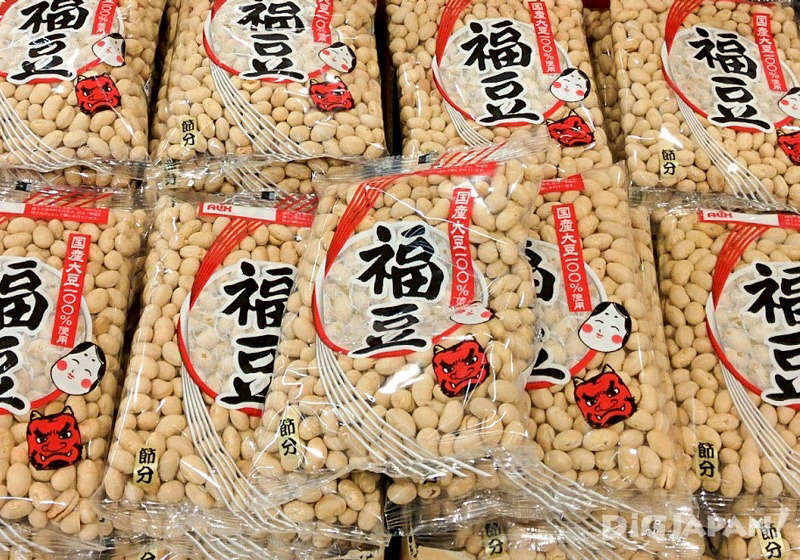
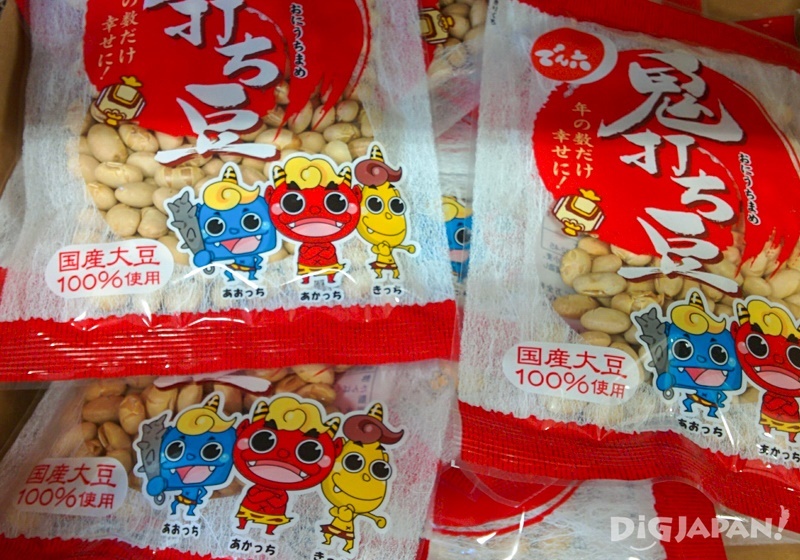
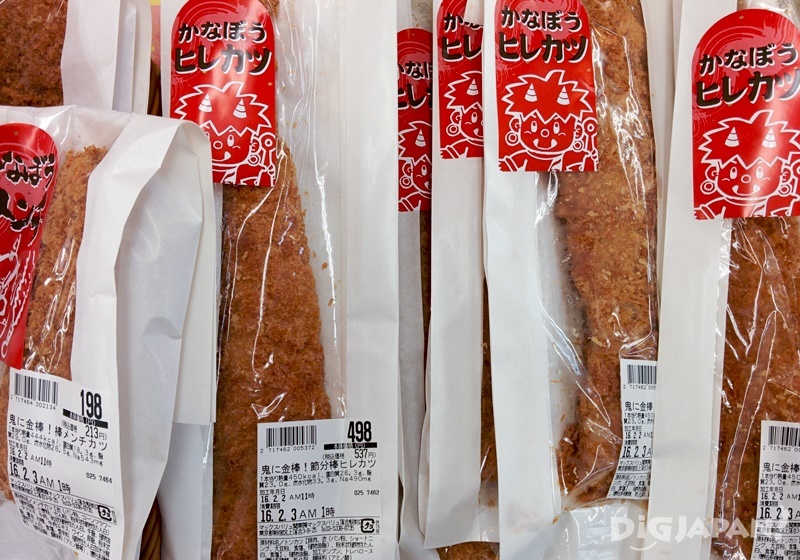
Kanabo hirekatsu! Kanabo is the studded club used by the Oni. Hirekatsu is a meat cutlet.
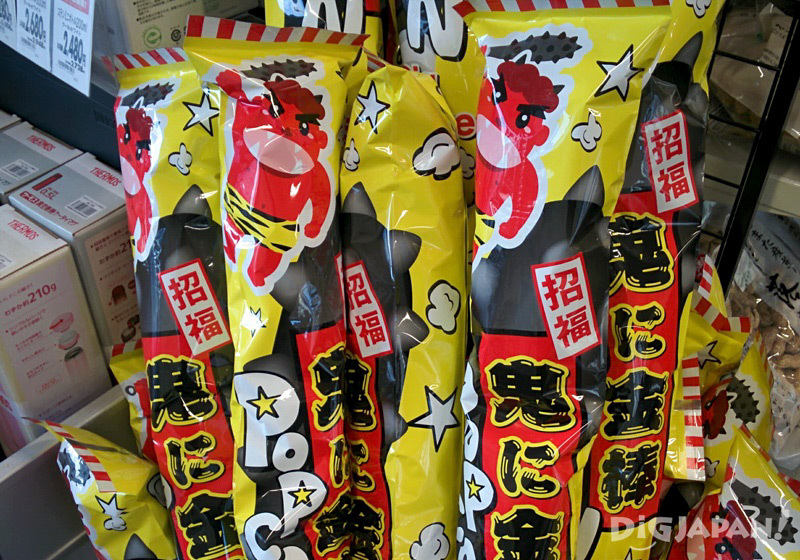
This looks great for kids! Kanabo pop corn.
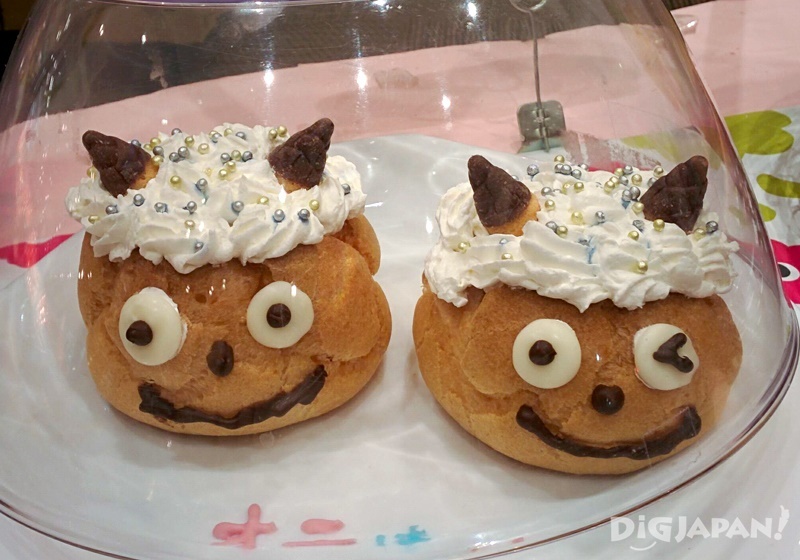
How about some cute Oni cream puffs?

I found these on display in my local supermarket. Very impressive!

This is the Hiiragi Iwashi (holly and sardine head). Another (lesser-known) tradition of Setsubun is to place a holly branch with a sardine head on it outside your door. The sharp points of the holly and the smell of the sardine are said to drive the Oni away!
Eating Giant Sushi Rolls

Another thing that people do on Setsubun day is eating ehomaki. Literally meaning "lucky direction roll", ehomaki is a makizushi (sushi roll) that is filled with seven ingredients, representing the Seven Lucky Gods. While regular maki-zushi usually comes in slices, ehomaki is left whole so as not to cut off the good connections and fortune. On the day of Setsubun you're supposed to eat ehomaki all in one go, in silence while making a wish. You should also face the year's "lucky direction". For example, the lucky direction of 2021 is south-southeast.

The tradition of eating ehomaki is said to have originated in Japan's Kansai region, mainly Osaka, and then spread to the rest of Japan. In January you'll see a lot of stores advertising ehomaki. You can pre-order it and it will be delivered to you on Setsubun day.
Setsubun was one of the traditions that fascinated me the most when I came to Japan. If you are ever in Japan at the beginning of February I strongly recommend participating in one of the public events at a temple or a shrine. You might feel closer to the culture, and even get to eat some tasty beans! It's really nice to see people still honoring their tradition even in modern times.
*Please note that all the event pictures are from past events. Most Setsubun public ceremonies for 2021 are cancelled.
About the Author
Laura is an Italian living and working in Tokyo. She loves exploring hidden and unknown places, taking pictures and listening to Punk Rock music. When she’s not busy doing the above, she might enjoy a craft beer or play the sanshin (an Okinawan instrument similar to a shamisen).

Liked this story? Like DiGJAPAN!
on Facebook for daily updates!
THIS ARTICLE IS BASED ON INFORMATION FROM 02 01,2021 Author:DiGJAPAN! Editorial Team













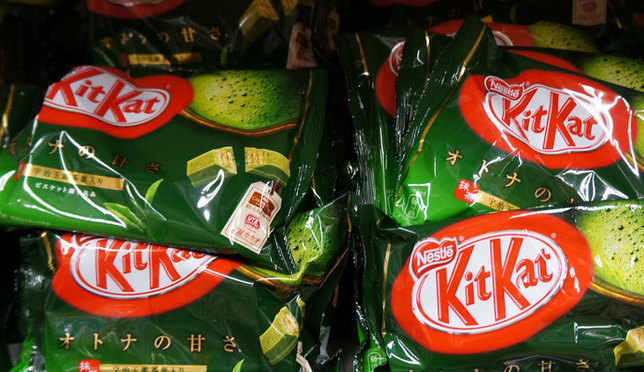

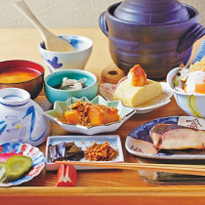
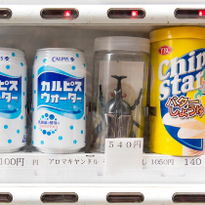





NEW COMMENT | 0 COMMENTS
Open a DiGJAPAN!
account to comment.
Open a DiGJAPAN! Account